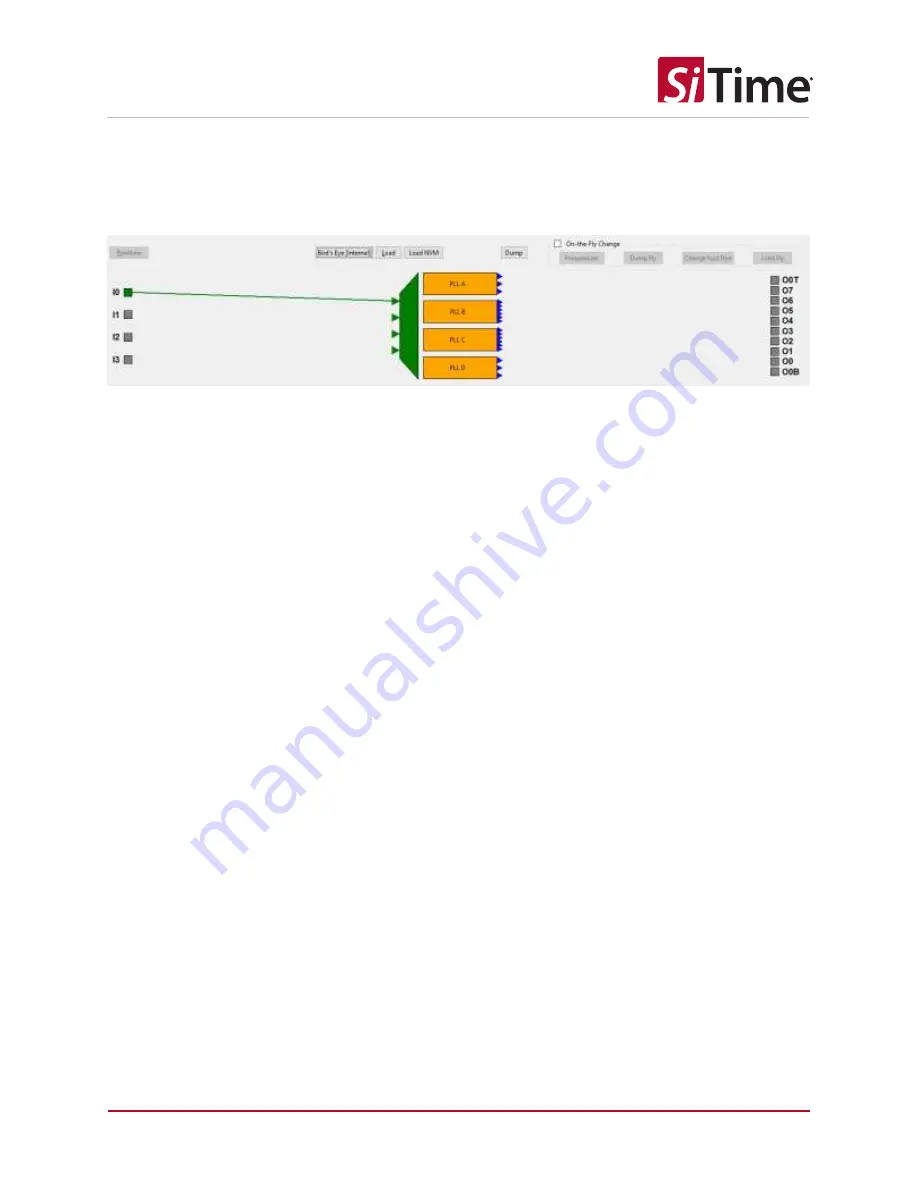
SiT9514x GUI-UM Rev 1.04
Page 23 of 95
GUI User Manual
Clock Generators, Jitter Cleaners, and Network Synchronizers
6.2.5
Bird’s Eye section
The
Bird’s Eye
section can be used to visualize the resulting configuration of Inputs to PLLs to Outputs.
Figure 25: GUI Bird
’
s Eye section
Click the
Bird’s Eye
button to activate
the Bird’s Eye
section, showing the configured signal paths. Click
the
Bird’s Eye
button again to open the
Bird’s Eye section in a separate window. Close that view to
completely close the Bird’s Eye view.
This lower section of the Cascade SiTime GUI is also used to:
•
Dump (save) and Load (open) device configuration files
•
Specify On-the-Fly frequencies
•
Change fout parameters
•
Dump and Load On-the-Fly configuration parameters
•
Select Realtime status of the device
The
Realtime
button opens the Realtime window that displays the detailed operational status of the
programmed device based on the current configuration. It can be is used to monitor device operation
and view the impact of the set configuration parameters. For an example, see






























